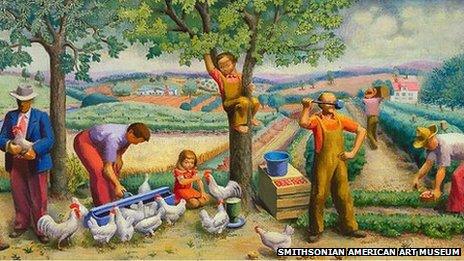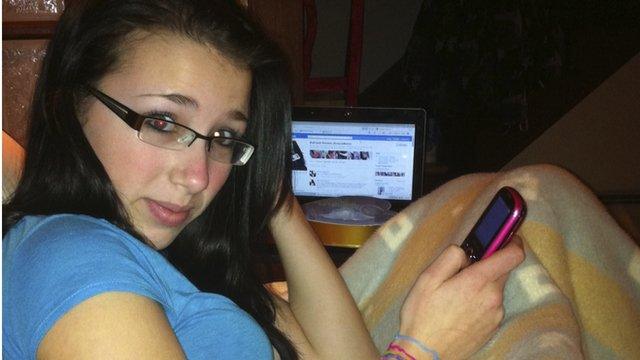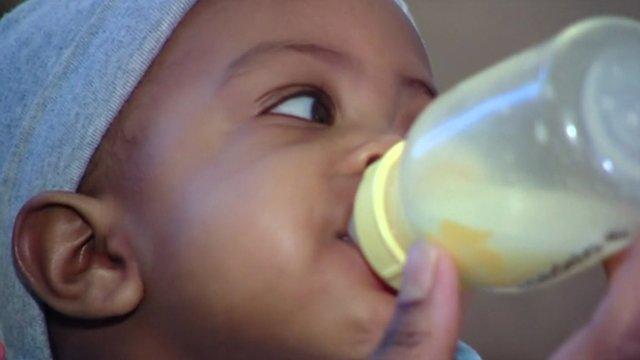How can Wikipedia woo women editors?
- Published
- comments
A push for more women editors on Wikipedia
Women make up only 9% of Wikipedia editors. Educators say raising that number is key to improving the online encyclopaedia, and have started campaigns to do just that.
At the Smithsonian American Art Museum, Depression-era artist Natalie Smith Henry's vivid depiction of a farm family hangs high on the wall.
But until recently, Henry didn't exist, at least not according to Wikipedia. Then Chelsea Tufarolo, a student at American University, decided to write an article about her.
It was Tufarolo's first post on the world's largest knowledge-sharing resource.
Editors and activists are trying to address the root of what critics describe as a major information gap on Wikipedia by getting more women to post. Roughly 91% of Wikipedia's editors are men, according to a 2011 Wikimedia Foundation survey, external.
Wikipedia purports to capture the sum of the world's knowledge, says Sara Snyder, deputy chief of the Media and Technology Office at the Smithsonian American Art Museum.
But "it's not accurate to call it the world's knowledge if it's just half the population's knowledge," she says.
Wikipedia hosts 4.4 million articles and consistently ranks as one of the top 10 most-visited websites in the world. Yet a Wikimedia study in 2011 revealed a fairly uniform picture of the writers behind Wikipedia - the average Wikipedian is a white, educated, computer-savvy man who lives in the US or Europe.
"That disparity means that a lot of perspectives are being left out," says Adrianne Wadewitz, a fellow at Occidental College who also serves on the board of the Wiki Education Foundation.
When Wadewitz showed Wikipedia's main page to her class one day, she found that the women featured were largely sexualised or portrayed as victims of a crime, while people of colour were represented as perpetrators of a crime.
For example, the list of pornographic actresses from the 1950s to the present is more than three times longer than the list of notable Native American women. It also has more names on it than the list of female poets and "sports women" combined.
To limit inaccurate or frivolous content, Wikipedia has "notability" and "verifiability" standards for what merits an article - meaning a person is notable only if he or she has received "significant coverage in reliable sources that are independent of the subject".
But some Wikipedians say those guidelines make it harder for many female figures to attain pages because historically, they didn't receive as much publicity or recognition as their male counterparts, leaving a much shallower pool of available reference material.
Minutes after Tufarolo posted her article on Henry, a Wikipedia editor nominated it for "speedy deletion" because the artist didn't appear to be significant, despite her work being on display at the Smithsonian.

A segment of Smith Henry's mural
Tufarolo gathered more references and proved why Henry deserved a page, but she said the experience was intimidating and discouraging.
Increasing the number of women writers is the key to correcting bias and scarcity of information, especially on content related to women, says Andrew Lih, author of The Wikipedia Revolution.
Lih, a veteran Wikipedian, teaches a class on Wikipedia at American University. His students visit a museum or cultural institution once a week and collaborate with curators and historians to improve articles.
He points to experiences like that of Tufarolo, one of his students, as a big reason why more women don't edit.
"Wikipedia is not only an unwelcoming place to female editors, it's unwelcoming to most people," Lih says. "It's an old-school online community... and it has a tradition of verbal fighting and verbal debate. In the best cases, that leads to things that inform and inspire. In the worst cases, they lead to people feeling intimidated and uncomfortable."
Several groups have worked to cultivate a more congenial atmosphere. WikiWomen's Collaborative and the Teahouse, a virtual tavern on Wikipedia, are forums to help support novice Wikipedia editors.
Snyder of the Smithsonian says Wikipedia's gender gap reflects disparities in the wider culture.
"When you look around the world at large, you see in public forums that men's voices dominate the conversation," she says. "We do see women needing more encouragement and invitation to voice their knowledge and expertise than men do. Men feel more confident doing that without the extra encouragement."
Women also have less free time than men. According to recent studies, American women spend an hour more per day doing unpaid housework and caretaking duties, as compared to men. For many women, allocating time for Wikipedia may not be a practical priority.
Some Wikipedians say gender disparities in science, technology, engineering and math might make the coding and mark-up language sometimes involved in editing seem daunting to potential editors.
But fields dominated by women also provide a natural stepping stone toward Wikipedia. For instance, 67% of journalism degrees, 81% of library and information sciences degrees, and 86% of museum studies degrees are awarded to women.
Tufarolo is studying communications, and now says she'd like to contribute more to Wikipedia. She's proud of her page on Henry.
"There's so much information missing," she says. "I'm glad I'm part of the group to help fill in the blanks."
- Published1 April 2014

- Published25 March 2014

- Published17 March 2014

- Published10 March 2014

- Published4 March 2014

- Published25 February 2014
.jpg)